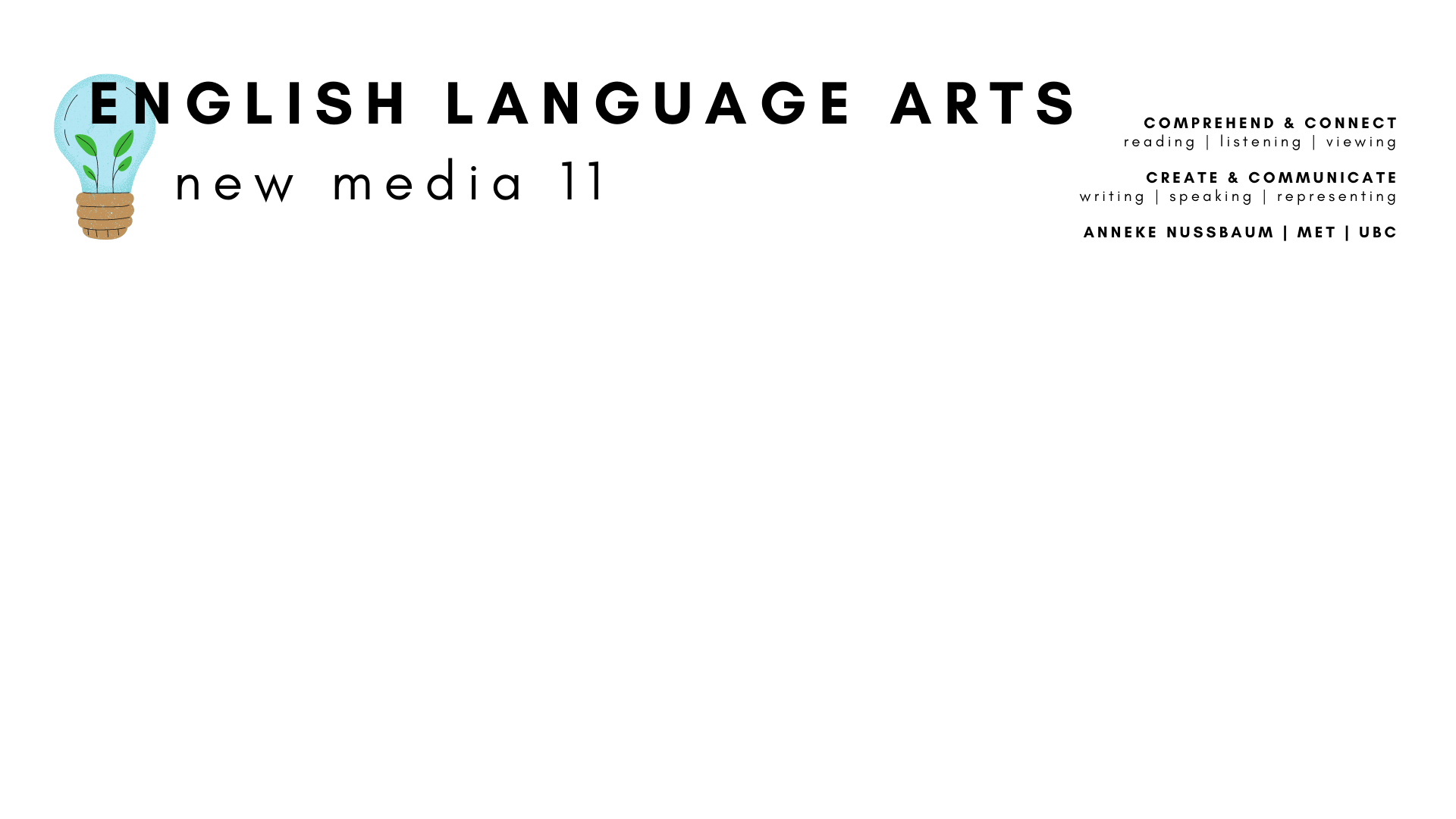Module 3 | Lesson 1 | Lesson 2 | Lesson 3 | Lesson 4
Lesson 4
Creative E-Writing
E-Literature Project
The Design Process
Blog Post #9: Share your E-Lit Creations
Electronic literature and video games “have a profound potential to impact how players view themselves and the world around them.
Ruberg (2020) Reimagining the Medium of Video Games, p. 2
Objectives
- Play with e-literature as you work through the design process
- Experiment with how authors can express ideas through born digital text
- Create a project to showcase your understanding of e-literature
- Write a text in an electronic literature genre of your choice (E-Poem, interactive fiction, hypertext fiction, narrative games, and so on) on a topic of your choosing
Project Examples: what “finished” can look like
- Found Interactive Kinetic E-Poem “Gatekeeping Game(r Hate) Culture” (2022) Anneke Nussbaum
- Combinatory Generative E-Poem: “Tough Guise” (2022) Anneke Nussbaum
- Interactive (Twine) E-Poem: “Like Watching a Sunshower” (2021) Anneke Nussbaum
- Hypertext Fiction (Genially): “Transparency” (2021) Anneke Nussbaum
- Hypertext Fiction (Twine): “Embers of Fate” (2022) Graeme Baerg, Anneke Nussbaum, Angela Reynolds
The Design Process
Design thinking is an iterative process. It progresses in stages, but there is much back and form, pivoting, adapting, and evolving based on what you learn throughout the process itself.
Empathize
- Use our discussions throughout Modules 1 – 3 as starting points of your research here.
- Interviewing your peers can give you more information that can help you design your e-lit text
- Use this Empathy Map Graphic Organizer to help you explore your audience in more depth.
Define
- Plan your Text with the Graphic Organizer below
- Audience: who are you writing for?
- Purpose: what do you want your audience to do, think, and/or feel after reading/playing your text?
- Topic: what will you write about?
- Form: what kind of e-lit text will you make?
- e-poetry (generative, kinetic, interactive, and so on)
- interactive fiction
- narrative game
- Context: how will your audience 3experience your text?
- This can link to the digital tool you might use to create your e-text
- Twine (hypertext fiction)
- TelescopicText (Stretchtext)
- Text Adventures: Quest & Squiffy (interactive fiction)
- Alice (storytelling)
- Genially (interactive)
- Bitsy Tool (game maker)
- Panda 3D (game maker)
- RPG Maker (game maker)
- Scratch (game builder)
- ToonTalk (game builder)
- Visual Studio Code (working directly in code)
- Animaker (animated text generator)
- Biteable (animated typography)
- Wick Editor (games, animations, and everything in-between)
Ideate
- Miro has many brainstorming templates that can support your ideation stage
- Support each other through this stage to explore possibilities
- Think “blue sky” to open yourselves up to unimagined scenarios
- Remember:

Draft

Playtest
- Partner up with another peer or peer group from the class to playtest each other’s e-text creations
- Provide each other with constructive feedback about your experience
- Begin with what you like, find interesting, what worked
- Then provide suggestions that you think would help enhance the text (“even better if…”)
- Use this feedback as part of your process to fuel your reflection and revision
- Reflect, Revise, Edit, Proof, re-playtest, and revise again
- It’s an iterative process!


Blog Post #9: Share your E-Lit Creations
- Post your Project in your Blog
- View, enjoy and comment on others’ projects because we all deserve kudos!
- Reflect on your process in your final blog post
- What aspects of your project are you proud of?
- What do you want your reader-player to notice?
- What would you do differently?
- What was tricky?
References
Ruberg, B. (2020). The queer games avant-garde: How LGBTQ game makers are reimagining the medium of video games. Duke University Press. https://doi-org.eu1.proxy.openathens.net/10.1215/9781478007302-001
